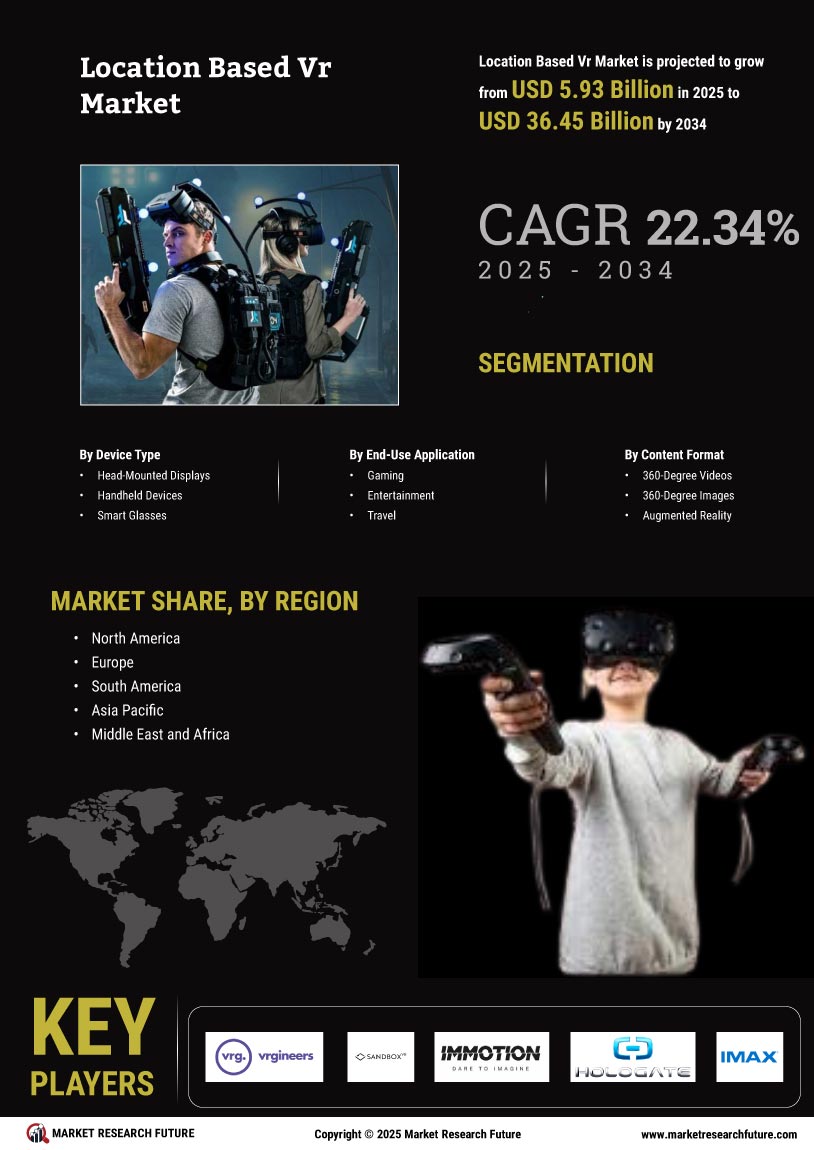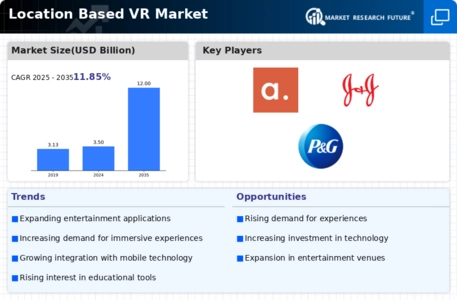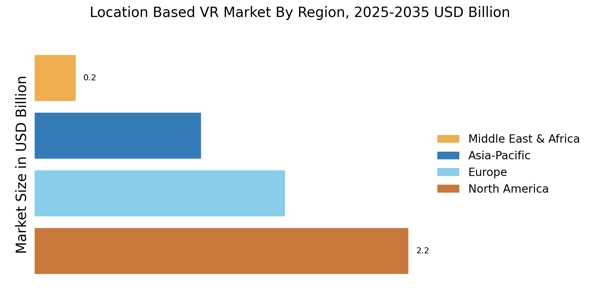Collaboration Between Industries
Collaboration between various industries is emerging as a significant driver in the Location Based VR Market. Partnerships between technology firms, entertainment companies, and educational institutions are fostering innovative VR applications that cater to diverse audiences. For example, collaborations between gaming companies and educational institutions are creating immersive learning experiences that enhance student engagement. This trend is likely to expand the market's reach, as it combines the strengths of different sectors to create unique offerings. The synergy generated through these collaborations may lead to the development of new business models and revenue streams, further propelling the growth of the location-based VR market.
Technological Advancements in VR
The Location Based VR Market is experiencing a surge in technological advancements that enhance user experiences. Innovations in hardware, such as improved headsets and motion tracking systems, are making VR more immersive and accessible. For instance, the introduction of 5G technology is facilitating faster data transmission, which is crucial for real-time interactions in VR environments. This technological evolution is likely to attract more consumers and businesses to invest in location-based VR experiences. As a result, the market is projected to grow significantly, with estimates suggesting a compound annual growth rate of over 30% in the coming years. Such advancements not only improve the quality of experiences but also expand the potential applications of VR in various sectors, including entertainment, education, and training.
Increased Investment in VR Infrastructure
Investment in VR infrastructure is a crucial driver for the Location Based VR Market. As more companies recognize the potential of VR, there is a notable increase in funding for the development of VR facilities and experiences. This includes investments in physical spaces designed for VR, as well as the technology required to support these experiences. Reports suggest that the investment in VR infrastructure could exceed billions of dollars in the next few years, indicating a strong belief in the market's potential. Such investments not only enhance the quality of location-based VR offerings but also contribute to the overall growth of the industry, as more venues become equipped to provide these experiences.
Growing Popularity of Social VR Experiences
The growing popularity of social VR experiences is influencing the Location Based VR Market. As users increasingly seek social interactions within virtual environments, location-based VR venues are adapting to meet this demand. These venues often provide multiplayer experiences that allow users to connect and interact in real-time, enhancing the overall appeal of VR. Market analysis indicates that social VR experiences are becoming a key component of the location-based VR landscape, with many venues incorporating social elements into their offerings. This trend not only attracts a broader audience but also encourages repeat visits, as users are likely to return for shared experiences with friends and family.
Rise in Consumer Demand for Immersive Experiences
Consumer demand for immersive experiences is a driving force in the Location Based VR Market. As individuals seek more engaging and interactive forms of entertainment, location-based VR offers unique experiences that traditional media cannot match. This trend is evident in the increasing number of VR arcades and entertainment centers that cater to this demand. Market data indicates that the revenue generated from location-based VR experiences has seen a substantial increase, with projections estimating it to reach several billion dollars by 2026. This growing appetite for immersive experiences is likely to encourage more businesses to explore location-based VR as a viable option for attracting customers and enhancing their offerings.


















Leave a Comment